Carlo Crivelli. Themarvelous relations curated by Francesca Coltrinariand Giuliana Pascucci, is a project promoted by the Marche Region and the Municipality of Macerata in collaboration with the University of Macerata and Fondazione Carima, which invites the public on a journey to discover the marvels of painting by Carlo Crivelli (Venice circa 1430/1435 - Ascoli Piceno? 1495) in a land rich in history and art. An itinerary that starts in Macerata, inside Palazzo Buonaccorsi, with seven paintings by Crivelli selected with the intention of bringing some works back to their territory of origin, and continues in 8 municipalities of the Marche Region, which preserve works by the artist or are strongly connected to it in a series of marvelous relationships.
Carlo Crivelli Le relazioni meraviglio se is the first monographic exhibition dedicated to the master in the Marche region his adopted homeland, and enriches the series of exhibition projects dedicated to him over the years at the national international level such as Carlo Crivelli Shadows on the Sky Birmingham, 2022 Gli ori di Crivelli Musei Vaticani, 2019 Ornament and Illusion Carlo Crivelli of Venice Boston, 2016 Crivelli and Brera Milan, 2009.
Restless painter experimenter full of grace and genius Carlo Crivelli is one of the most intriguing figures of the 15th century. Venetian by birth, following a judicial affair in which he was involved, he left the lagoon, arriving first in Zara and then moving to the Marche region (from 1468 to 1495 influencing definitively the art history of that territory and beyond. Ignored by Giorgio Vasari unknown for decades rediscovered and adored especially by English Pre-Raphaelite artists, contended by the world’s collectors, Carlo Crivelli to this day is an independent figure projecting his charm, made up of ever-changing inventions, technical perfection and mystery.
The occasion of Carlo Crivelli. The Marvelous Relations is the restoration carried out on behalf of Crivelli’s Madonna and Child housed in Palazzo Buonaccorsi and now presented for the first time thanks to a rediscovered legibility along with an important novelty: in fact, following careful analysis, it is now possible to state that the work was executed directly on canvas leading to the exclusion of the hypothesis of transport from a panel until now claimed. The discovery, supported by a series of evidence, thus identifies the Madonna as the only known example of a canvas painted by Crivelli. And, like any discovery, it leads to question balances and certainties, opening up new scenarios for research and knowledge. While, for example, it reinforces the relationship between Crivelli and Padua, particularly with the workshop of Francesco Squarcione, in which the young Mantegna, one of the pioneers of painting on canvas, was also trained, it is also necessary to reconsider the figure of Crivelli, who appears to us as an experimenter in a still rare technique, which he probably used to adapt to the demands of the client and the destination of the painting. And then again, the unlining that made it possible to arrive at the discovery, thanks to direct and close observation of the front but especially of the back, also made it clear that the Madonna was part of a larger complex, likely the one described by Luigi Lanzi in the late 18th century on an altar in the church of Santa Croce in Macerata.

 Carlo Crivelli,
Carlo Crivelli,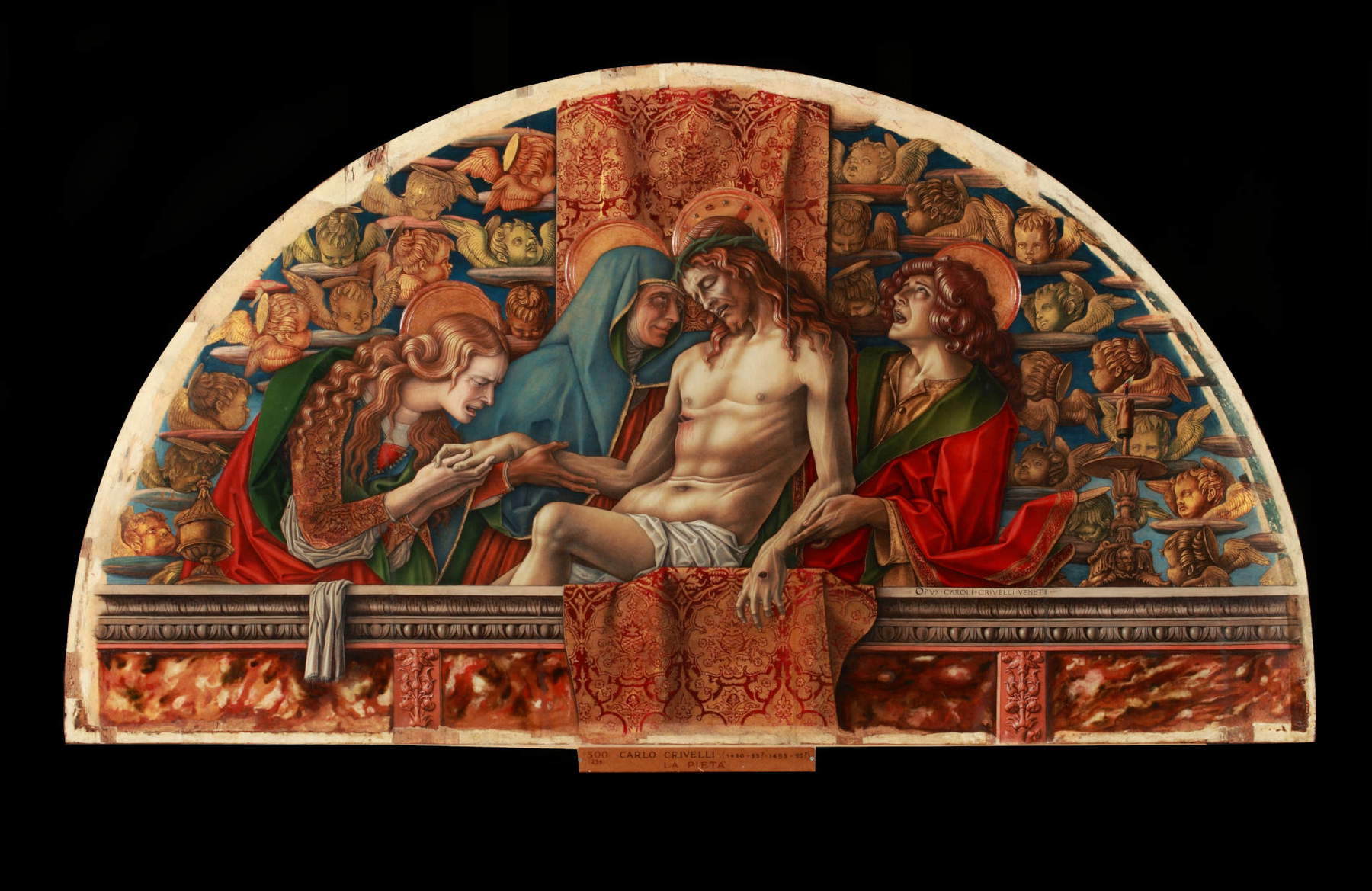 Carlo Crivelli,
Carlo Crivelli,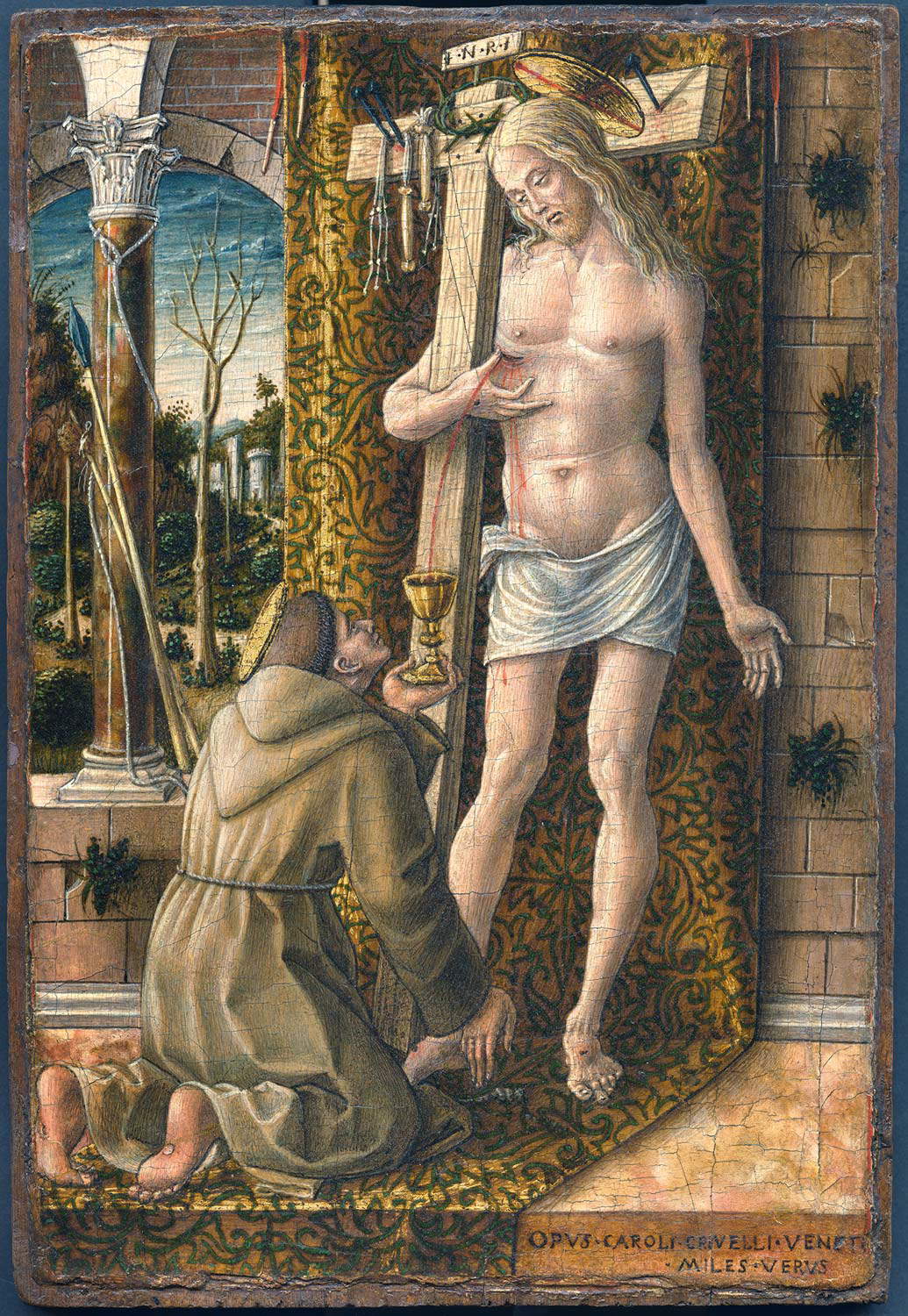
It starts inside Palazzo Buonaccorsi, designed in 1697 by Giovan Battista Contini, a pupil of Gian Lorenzo Bernini where, next to the Macerata Madonna and Child will be on display: Madonna of Milk from the Parish Art Gallery of Corridonia, Madonna and Child from the Carrara Academy of Bergamo, Pieta (Dead Christ Mourned by the Virgin, St. John the Evangelist and St. Mary Magdalene) from the Vatican Museums, St. Francis Collecting the Blood of Christ from Museo Poldi Pezzoli in Milan, Christ Blessing from Museo Nazionale di Castel Sant’Angelo in Rome, as well as a work by his brother Vittore Crivelli, St. Sebastian and Devotees kept in the Soprintendenza’s storerooms at Galleria Nazionale delle Marche in Urbino and which will be returned at the end of the exhibition to the town of Montegiorgio, from which it came.
From Macerata it then continues to Corridonia, San Ginesio, Sarnano, Monte San Martino, San Severino Marche, Serrapetrona, Belforte del Chienti and Camerino. A project that aims to rediscover Crivelli’s work, including large altarpieces and works of reduced format for private devotion and the link with the Marche region that hosted him (from 1468 to 1495), in which he created most of his masterpieces and on which he projected his influence. Itinerario Crivelli project developed through collaboration with University of Macerata, the municipalities involved and the dioceses of Macerata and Camerino, includes works by the Venetian master and artists strongly connected to him, such as his brother Vittore Crivelli, hispupil Pietro Alemanno, the Vivarini, Giovanni Boccati, and Lorenzo d’Alessandro da Sanseverino, examples of the Venetian polyptych tradition both imported and created by local masters, as well as Antonio Solario, designated heir to the workshop of the last of the Crivellis.
The exhibition is accompanied by the catalog Carlo Crivelli Le relazioni meravigliose published by Silvana Editoriale with texts by Paola Ballesi Francesca Coltrinari, Giuliana Pascucci, Daphne De Luca, Fabio Piacentini, Ulderico Santamaria, Fabio Morresi, Massimo Alesi, Giuseppe Capriotti, Stefano Papetti, Sonia Melideo, and Daniela Tisi.
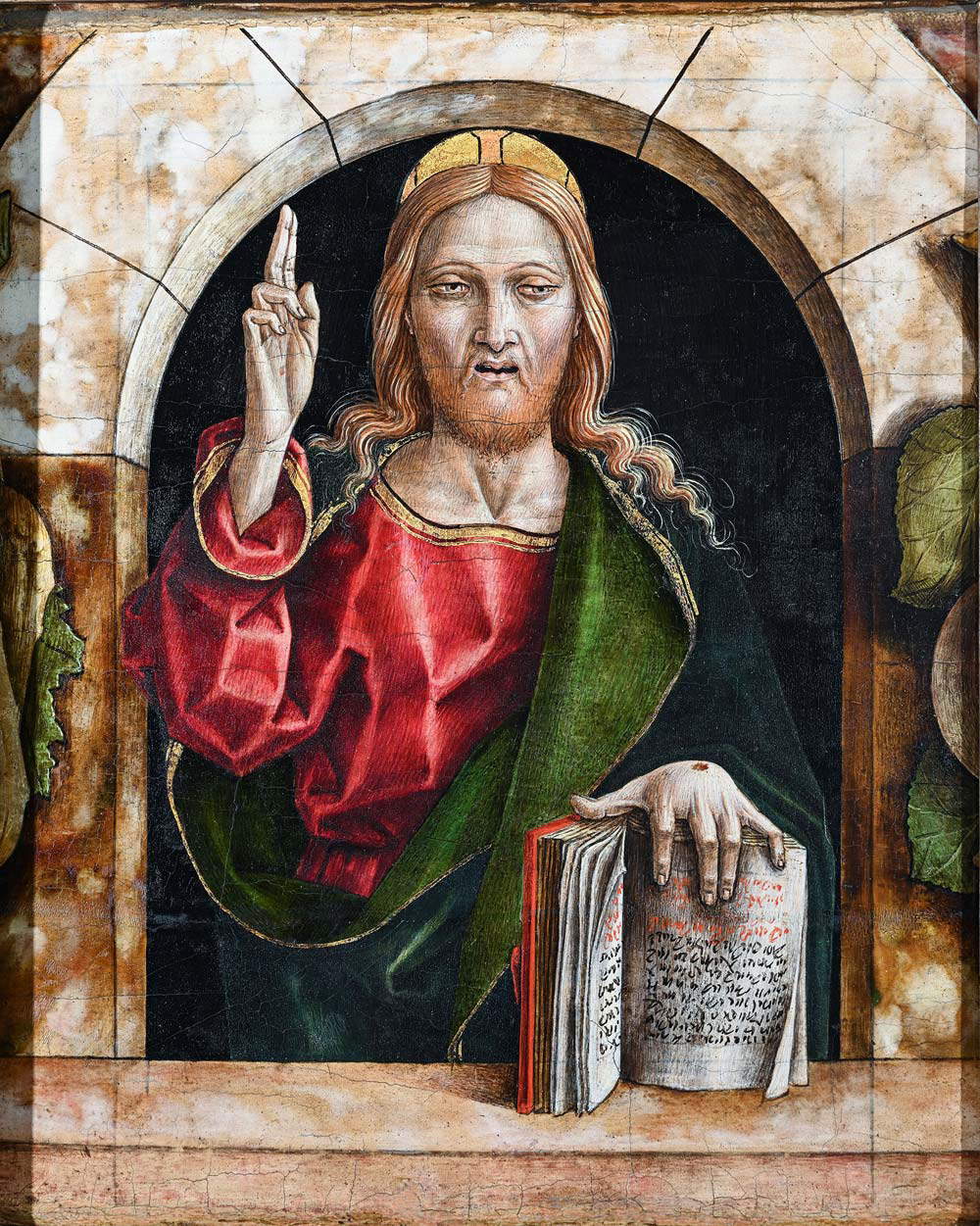
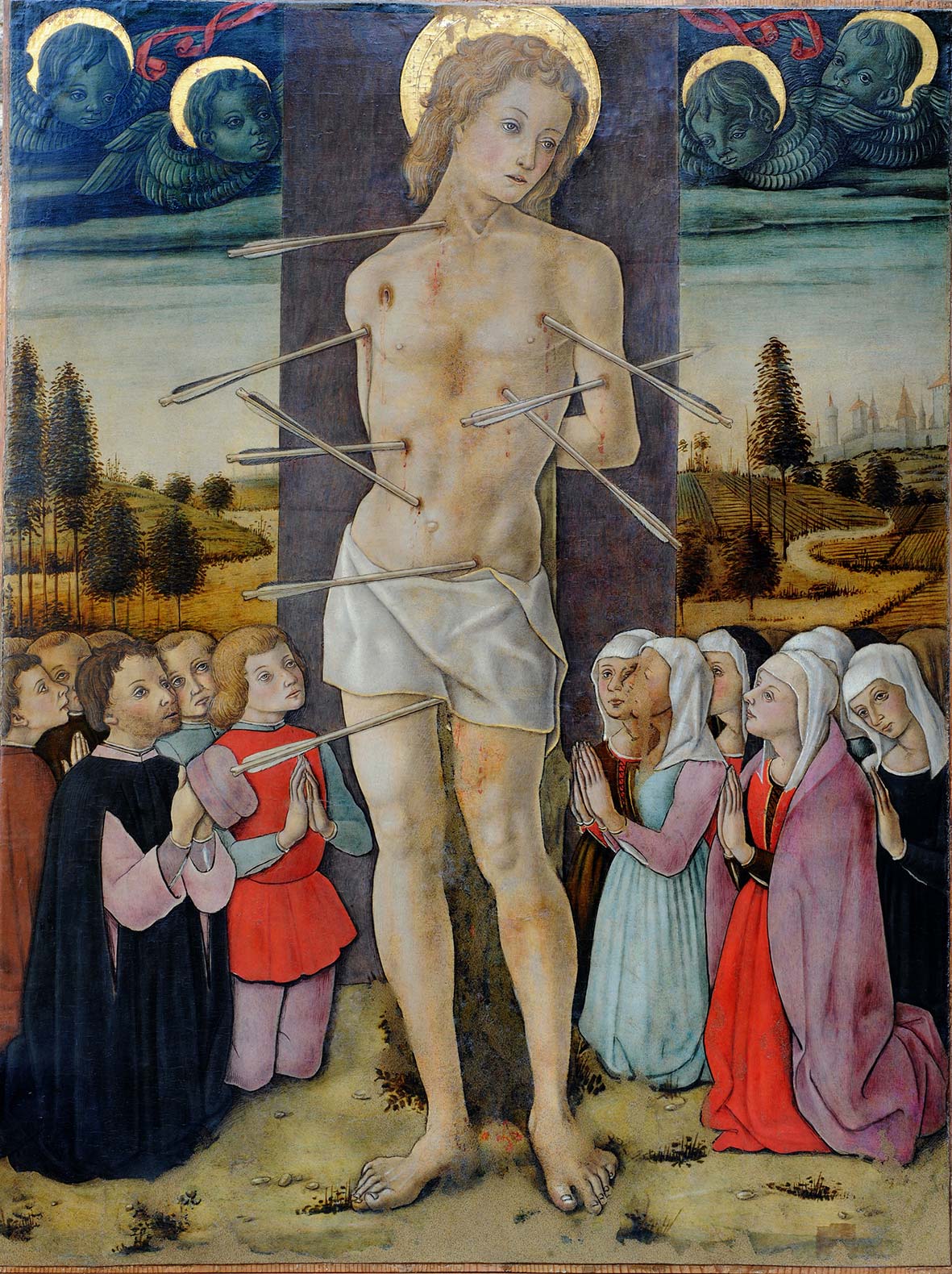
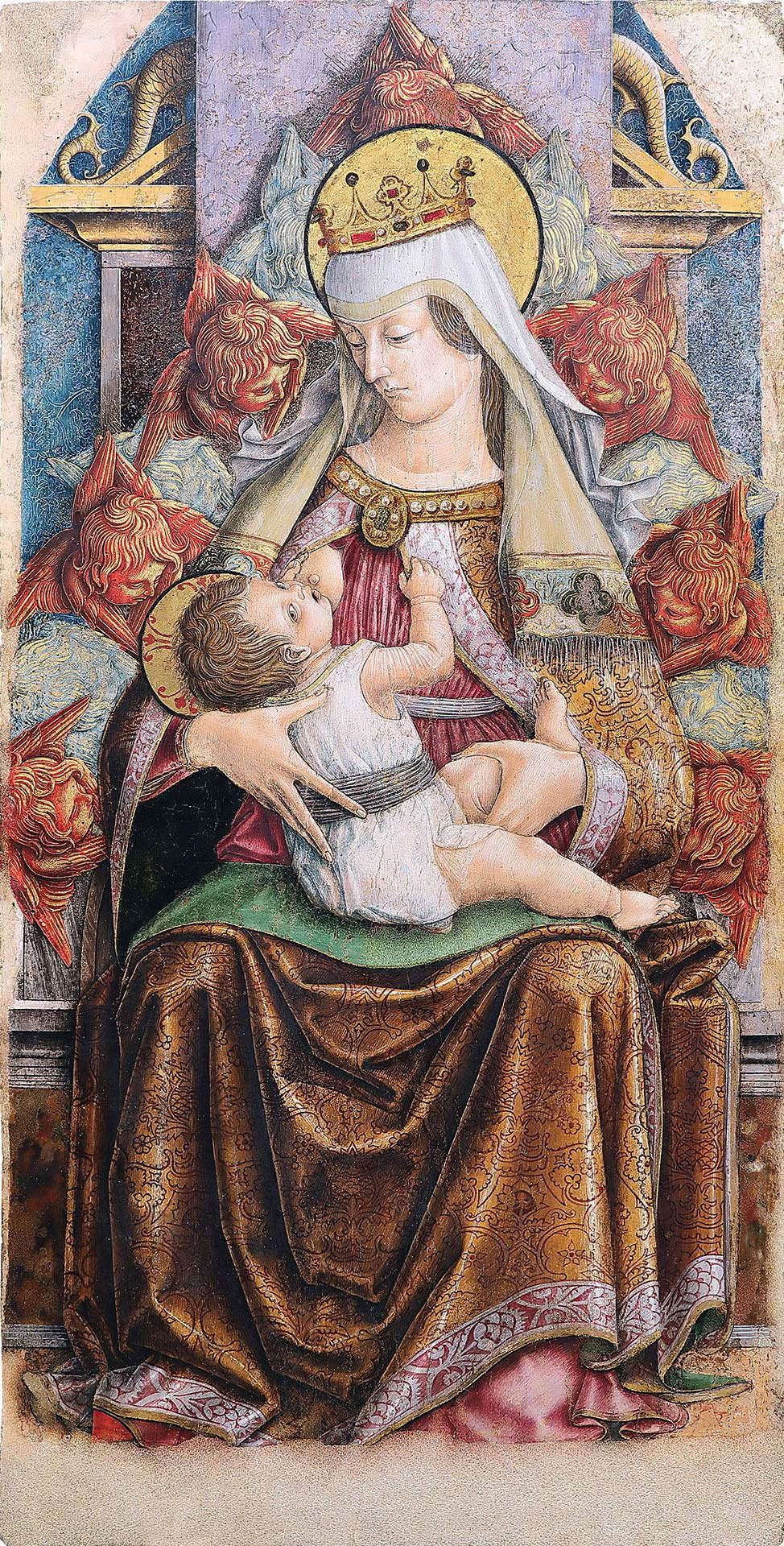
The occasion of Carlo Crivelli. The marvelous relations is the restoration carried out on behalf of Crivelli’s Madonna and Child housed in Palazzo Buonaccorsi and now presented for the first time thanks to a newfound legibility along with an important novelty: as a result of careful analysis, it is in fact now possible to state that the work was executed directly on canvas leading to the exclusion of the hypothesis of transport from panel until now claimed. The discovery, supported by a series of evidence, thus identifies the Madonna as the only known example of a canvas painted by Crivelli. And, like any discovery, it leads to question balances and certainties, opening up new scenarios for research and knowledge. While, for example, it reinforces the relationship between Crivelli and Padua, particularly with the workshop of Francesco Squarcione, in which the young Mantegna, one of the pioneers of painting on canvas, was also trained, it is also necessary to reconsider the figure of Crivelli, who appears to us as an experimenter in a still rare technique, which he probably used to adapt to the demands of the client and the destination of the painting. And then again, the unlining that made it possible to arrive at the discovery, thanks to direct and close observation of the front but especially of the back, also made it clear that the Madonna was part of a larger complex, likely the one described by Luigi Lanzi in the late 18th century on an altar in the church of Santa Croce in Macerata.
The restoration, which imposes a revision of balances and information hitherto taken for certain, poses new questions and new research challenges. If a Carlo Crivelli canvas exists, is it conceivable that others might exist? Which ones? Where to look? Then again, the unlining that made it possible to arrive at the discovery, through direct and close observation of the front but especially the back, also highlighted the resizing of the work. And again, Crivelli’s use of the canvas, a document of the same practice in the same years in other areas, reinforces the painter’s connection to Padua and Squarcione’s workshop, possible to learn more? How How did the discovery come about? Very often in the history of art, direct and close viewing together with new technologies produce unexpected ways of understanding, this time the major credit goes to the unlining as well as, of course, to the skills of the restoration and curatorial team composed of Daphne De Luca, Francesca Coltrinari and Giuliana Pascucci. The catalog published by Silvana Editoriale Carlo Crivelli The Wonderful Relations contains essays by Daphe De Luca, Giuliana Pascucciand Francesca Coltrinarion the restoration of the work.
“I’m proud,” said Sandro Parcaroli, mayor of Macerata, “of a project that has seen the City of Macerata, together with the Marche Region, the University of Macerata and the Carima Foundation collaborate to create an exhibition dedicated to Carlo Crivelli, one of the most intriguing artists of the Italian Renaissance A project, presented at the Accademia di San Luca in Rome, born out of the desire to study and enhance the Madonna and Child in the civic collections of Palazzo Buonaccorsi beginning with diagnostic analyses and restoration It is through this courageous intervention and to the contribution of the new studies that we hope to link Macerata to a new vision on the work of the renowned Renaissance artist Beginning October 7, we will offer visitors not only new reading possibilities but also the opportunity to expand their experience of the museum spread over our territory by walking one or more Crivellesque itineraries.”
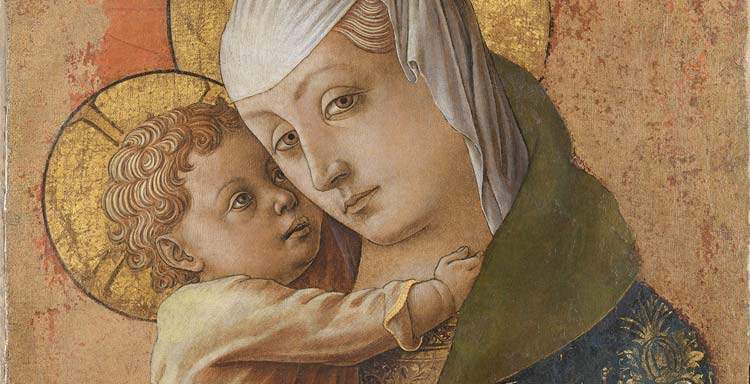 |
| Macerata and Marche expose the painting of Carlo Crivelli. With an important discovery |
Warning: the translation into English of the original Italian article was created using automatic tools. We undertake to review all articles, but we do not guarantee the total absence of inaccuracies in the translation due to the program. You can find the original by clicking on the ITA button. If you find any mistake,please contact us.